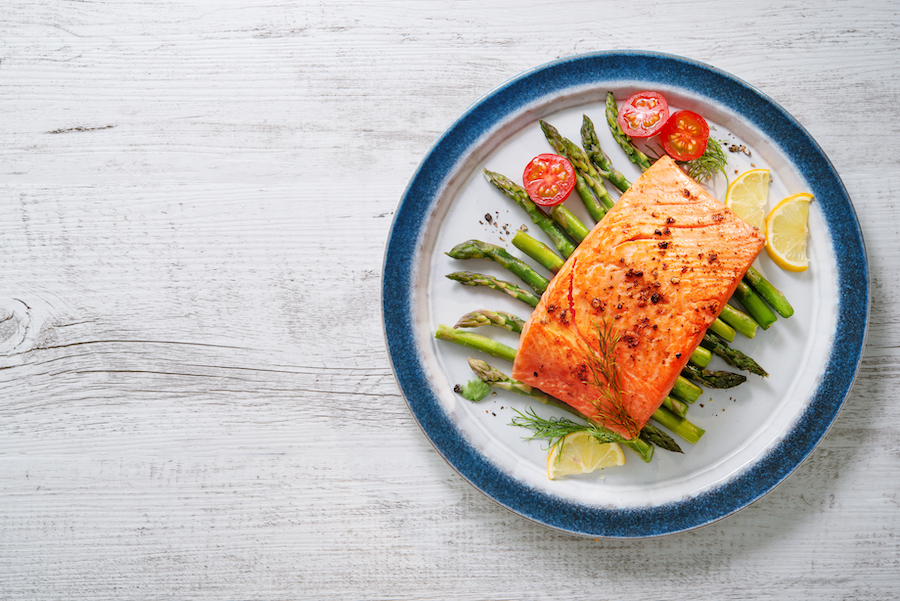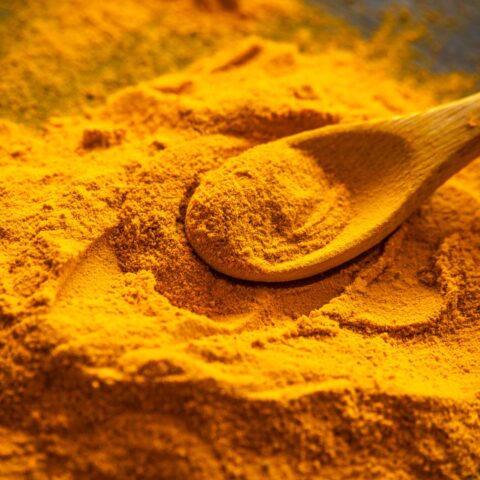Simple Ways to Reduce Omega-6s and Increase Omega-3s in Your Diet for Better Health

If there’s one area where the nutrition media seems to sing a different and more confusing tune every week, it’s with their messages about fats.
Low fat was good for us, now it’s not. Saturated fats may not be the heart-clogging poison we thought. And what exactly are trans fats? It’s enough to make us throw our hands in the air and reach for the nearest burger.
Fortunately, one message has been consistent: omega-3 essential fatty acids (EFAs) are extremely beneficial for your overall health.
The problem is, not all sources of omega-3 fatty acids are created equal.
In fact, in his recent post on multi-generational vegetarians, Christopher Clark explained how poorly the most common plant source of Omega-3s, called DHA, is converted to the form that we use, called EPA. It’s EPA which exerts the majority of the potent benefits of omega-3 fats.
But that’s only half of the story. While omega-3’s benefit our health, too much consumption of its counterpart, omega-6 EFAs, increases circulating levels of inflammatory arachidonic acid (AA) which can promote heart disease, cancer and most chronic diseases. 1
Unfortunately, our bodies can more readily convert omega-6 fatty acids to AA. Especially among some multi-generational vegetarians. That’s why, for optimal health, it’s not enough to just increase your variety of DHA and EPA-rich foods. You need to reduce your intake of pro-inflammatory omega-6 fats as well.
Decrease Your Omega-6 Intake
The balance of omega-6 to omega-3 is critically important and unfortunately today’s modern diet is loaded with omega-6 fats. The omega-6 to omega-3 ratio of ancestral hunter-gatherer diets was approximately 2:1-3:1, whereas today’s ratio is around 10:1 to 20:1 (and higher among vegetarians). 2
Many people aren’t even aware they consume as much Omega-6 fatty acid as they do. It’s hidden in processed and convenience foods, used in most restaurants (even the expensive ones!) and in your favorite midday treat.
Vegetable and cooking oils are the most common sources. The following is a list of common omega-6 rich oils:12
| Oil | Omega-6 | Omega-3 |
| Safflower | 75% | 0% |
| Sunflower | 65% | 0% |
| Corn | 54% | 0% |
| Cottonseed | 50% | 0% |
| Sesame | 42% | 0% |
| Peanut | 32% | 0% |
| Soybean | 51% | 7% |
| Canola | 20% | 9% |
| Fish Oil | 0% | 100% |
For multi-generational vegetarians with the genetic variant described in Christopher Clark’s post, reducing these oils in the diet is a must.
But all of us will benefit from cutting out these pro-inflammatory oils in favor of Paleo-friendly fats like beef tallow and duck fat (best for high-heat cooking) as well as coconut, avocado, walnut, macadamia or extra-virgin olive oil (best for moderate-heat cooking).
Increase Omega-3 Intake (EPA/DHA)
Now that you’ve cleared your kitchen of pro-inflammatory omega-6 fats, it’s time to ramp up your dietary intake of the extra-long chain omega-3 fats; DHA and EPA.
A daily intake of just 1g of combined EPA and DHA can have many positive effects. If you’re overweight or struggling with poor health, increasing your intake of omega-3 fats can improve blood sugar and insulin control, help fight off low mood and depression, and protect you from coronary heart disease. 3,4,5
If you’re exercising regularly (or just getting active), the University of Florida found consuming DHA post-training was able to significantly reduce exercise induced pro-inflammatory markers IL-6 and CRP over a two-week period. 6 In the UK, researchers at Cardiff University found that EPA and DHA were able to reduce key proteins that trigger the disease progression in osteoarthritis. 7
Fish: A Great Source of EPA
Terrific sources of extra-long chain omega-3 fats include Atlantic mackerel (2.6g per 3.5 oz. serving), herring (1.8g), tuna (1.6g), and salmon (1.5g per 3.5 oz.). If you like shell fish, blue mussels (0.5g per 3.5oz serving), oysters (0.6g), and squid (0.4g) are nice options as well. Try great recipes like mackerel tartare and spicy salmon with avocado and yams.
Lean Meats: A Less Known Sources of Omega-3s
While most people naturally associate feedlot beef with saturated fats, and look to fish and seafood to get their omega-3s, grass-fed beef is actually a good source of EPA and DHA (0.3g per 3.5oz. serving). Ancestral staples like wild game meats – elk, bison, venison, etc. – are also good options as they’re naturally low in pro-inflammatory omega-6 with some omega-3s. Try this elk recipe perfect for a summer BBQ or stir-fry beef with veggies at dinner.
Omega-3 Eggs
Pasture-raised eggs are far more nutrient dense than conventional eggs and provide 0.3g of omega-3s per two large eggs.8
If there’s a lesson to be learned, it’s that the balance of omega-3 to omega-6 is what’s crucial for optimal health, as well as mental and physical performance.9,10,11 Focus on both reducing your intake of pro-inflammatory omega-6 fats and increase your intake of extra-long chain omega-3 fats to reverse chronic degenerative conditions and restore health and vitality.
References
[1] ResearchGate. (March 29, 2016). Human genome shaped by vegetarian diet increases risk of cancer and heart disease. Retrieved from https://www.researchgate.net/blog/post/human-genome-shaped-by-vegetarian-diet-increases-risk-of-cancer-and-heart-disease
[2] Cordain L, Eaton SB, Sebastian A, et al. Origins and evolution of the Western diet: health implications for the 21st century. Am J Clin Nutr. 2005;81(2):341-54.
[3] Delarue J et al.Interaction of fish oil and a glucocorticoid on metabolic responses to an oral glucose load in healthy human subjects.Br J Nutr.2006 Feb;95(2):267-72.
[4] Su K, et al.Omega-3 fatty acids in major depressive disorder. A preliminary double-blind, placebo-controlled trial.Eur Neuropsychopharmacol 2003;13(4):267-271
[5] Okuyama H et al. ω3 Fatty Acids Effectively Prevent Coronary Heart Disease and Other Late-Onset Diseases – The Excessive Linoleic Acid Syndrome. World Review of Nutrition and Dietetics (Karger) 2007, 96 (Prevention of Coronary Heart Disease):83-103. Retrieved From – https://www.researchgate.net/publication/232471505_o3_Fatty_Acids_Effectively_Prevent_Coronary_Heart_Disease_and_Other_Late-Onset_Diseases_-_The_Excessive_Linoleic_Acid_Syndrome
[6] Phillips T et al.A dietary supplement attenuates IL-6 and CRP after eccentric exercise in untrained males.Med Sci Sports Exerc 2003;35(12):2032-2037.
[7] Zainal, Z et al. Relative efficacies of omega-3 polyunsaturated fatty acids in reducing expression of key proteins in a model system for studying osteoarthritis. Osteoarthritis Cartilage. 2009 Jul;17(7):896-905.
[8] Karsten H et al. Vitamins A, E and fatty acid composition of the eggs of caged hens and pastured hens. Renewable Agriculture and Food Systems. Volume 25/ Special Issue 01 / March 2010, pp45-54. Retrieved From – //journals.cambridge.org/action/displayAbstract?fromPage=online&aid=7219036
[9] Sheppard, K.W. and C.L. Cheatham, Omega-6 to omega-3 fatty acid ratio and higher-order cognitive functions in 7- to 9-y-olds: a cross-sectional study. Am J Clin Nutr, 2013. 98(3): p. 659-67.
[10] Simopoulos, A.P., An Increase in the Omega-6/Omega-3 Fatty Acid Ratio Increases the Risk for Obesity. Nutrients, 2016. 8(3): p. 128.
[11] Simopoulos, A.P., The importance of the ratio of omega-6/omega-3 essential fatty acids. Biomed Pharmacother, 2002. 56(8): p. 365-79.
[12] Kris-Etherton, P et al. Polyunsaturated fatty acids in the food chain in the United States. Am J Clin Nutr January 2000 vol. 71 no. 1 179S-188S
//ajcn.nutrition.org/content/71/1/179S.full?ijkey=5c7af875f3dc71a303f7df78c52145e8b7c31643
Marc Bubbs ND, MSc, CISSN, CSCS
Dr. Marc Bubbs is a naturopathic doctor, author, and performance nutrition consultant for a portfolio of professional and Olympic athletes.
More About The Author



